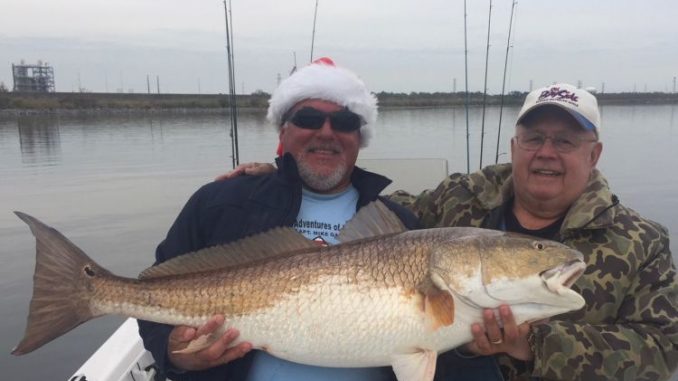
Target more than just specks this month
My old friend Capt. Mike Gallo (504-259-3474) says the frigid cold water will pile the fish up in the deep holes of Chalmette’s waters — and that’s where they’ll stay until it warms up.
“You have to recognize that trout are not the only fish to target in the cold water months,” he said. “Talk yourself into the realization that you are hunting for a mixed bag this month that could include redfish, drum, sheepshead, flounder, bass, specks and freshwater catfish.
“The frigid weather at the first of the year sent water temperatures plunging into the low 40-degree range, giving trout lockjaw and driving them deep — but don’t get discouraged because there’s plenty fish in the water to fight.”
Gallo offered these suggestions to anglers heading to Chalmette:
1. Fish the locks and rock points along the MRGO. The water is deep, there is plenty structure on the bottom and a variety of fish congregate there. Fish the down-current side with dead or live shrimp on the bottom, preferably on a drop-shot rig to minimize hang-ups, but be prepared to get snagged and re-tie your lines. Gallo said sliding sinker rigs snag up quickly on the littered bottom, so even a plain jighead loaded with market shrimp is a better choice.
2. Fish the Wall. Gallo said yo park your boat on the down-current side and out of any hard-falling tide.
“Cold, lethargic fish won’t park in the hard current. They’ll back off out of it and so should you if you want to catch them,” he said. “Don’t neglect the big support pipes on the New Orleans side of the wall. It’s deep there, and we consistently catch sheepshead and drum around them. But there are lots of snags down there, too, so be prepared to re-tie.”
3. The Air Products and Michoud Slip Canals, and the rocks by Boh Brothers. “I target the points or corners first, and then poke along seeing what else I can find,” he said. “I don’t fish a fast moving current, so ignore points during cold months with hard flowing water currents. Find points with what I call a soft current, and fish live or dead shrimp on the bottom. That’ll usually produce reds and drum and sheepshead.”
4. The ICW. “There are many good, deep holes along the ICW. Old favorites are the shell bank and the Pumping Station where depths plunge to 40 feet,” he said. “I like to fish the ledges in the real deep holes instead of dead on the bottom, again, using live or dead shrimp, just slow jigging, waiting for the fish to find your bait.”
5. Be opportunistic. “Use your depth sounder in the winter whenever you run a bayou or canal,” he said. “Look for deeper holes and don’t hesitate to try a new spot. If I see a deep hole I’ll park and try it, and if it has an oyster bottom, you’ll feel it with your bottom rig. Mark that spot, and give it another chance, even if it doesn’t produce that day. You know its deep and has structure, so it may produce next time in cold water conditions.”
Gallo said live shrimp might be scarce, but they really aren’t necessary this month, anyway.
“The water is so cold they aren’t going to be frisky anyhow,” he said. “So you might as well use dead ones.”